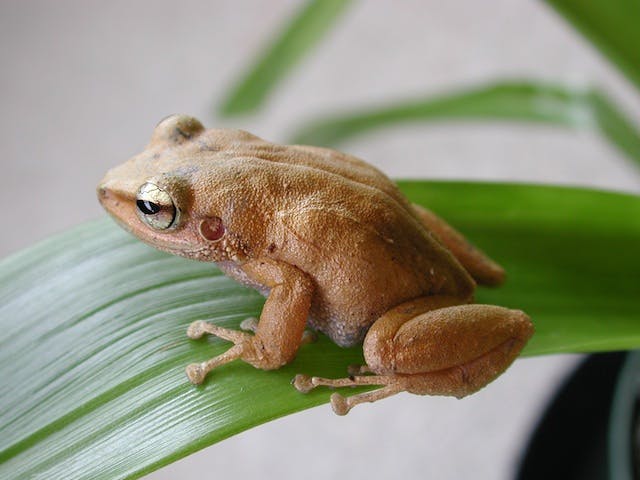ko-KEE-ko-KEEEEEEE
ko-KEEE-ko-KE…Coqui frogs are usually the size of a quarter, but females can get twice as big.
Appropriately named after its high-pitched mating call, the coqui frogs have replaced crickets as Hawaii’s sunset serenaders. The little guys may be hard to find, some only the size of quarters, but they’re definitely not hard to hear. By nightfall, backyards become symphonies (or acoustic catastrophes, as some people might say) that carry through the early morning hours. Big Island residents get front row seats since the majority of the coqui population resides there. Some have sighted them on Oahu and Kauai as well.
The frogs aren’t actually native to Hawaii and were brought here by accident from Puerto Rico in the late 80’s. Since then, the coqui population took a huge leap, more than tripling its numbers. They’ve made their presence known, but not everyone considers them cute nor do they consider the mating call musical. In fact, most Hawaii residents feel this way about the coqui and hope these frogs will, well, croak. But not in an auditory frog noise kind of way; rather in a, “I hope you get a taste of your own medicine” way.
The state supports those anti-froggers’ claims. In 2006, Hawaii passed a law specifically defining the reptiles as “pests” for (1) being a noise nuisance and (2) threatening Hawaii’s ecosystems. They have big appetites and eat native insects and spiders.Females can lay at least one clutch of eggs per month. Male coqui tend to the eggs until they hatch.
Others say the coqui do no harm and that they’re not poisonous; their insect-eating habits help control the pesty ones, like mosquitoes and termites. They believe the methods of extermination are inhumane – frogs shouldn’t be boiled, frozen nor should they be sprayed with calcium hydroxide.
You be the judge next time you’re in Hawaii…or listen to them here. Still not certain? Then you may want to check out the Coqui Sanctuary and Natural Preserve in Puna on the Big Island. A group of environmentalists designated more than half of the 67-acre property to the coqui.
You may even see or hear them at the Lava Tree State Monument or Waipio Valley Lookout, both also located on the Big Island. Those hoping to minimize the frog population warn visitors to be aware when leaving such coqui-infested places. The frogs tend to spread by hitchhiking on vehicles leaving the area.
To learn more about the coqui, visit https://www.ctahr.hawaii.edu/coqui. For those interested in visiting the coqui refuge, contact the Coqui Hawaiian Integration and Reeducation Project (CHIRP) at 808-935-5563.
Photo Credit: AH Hara, UH CTAHR




